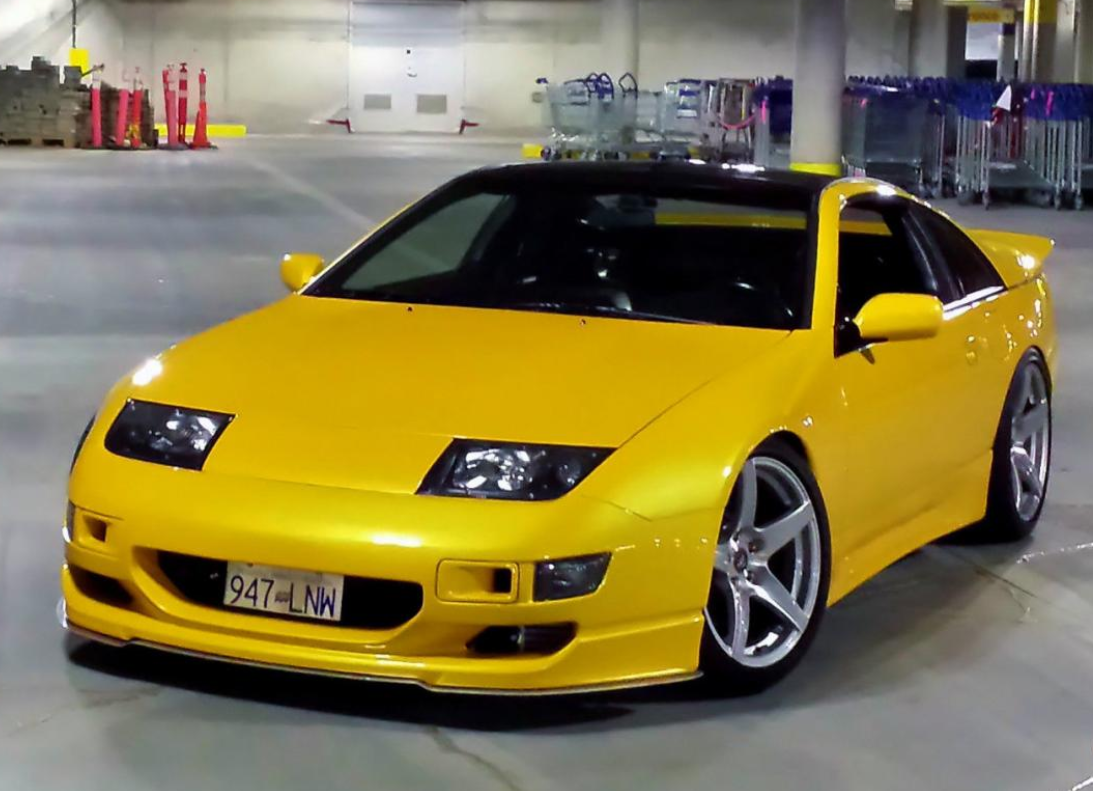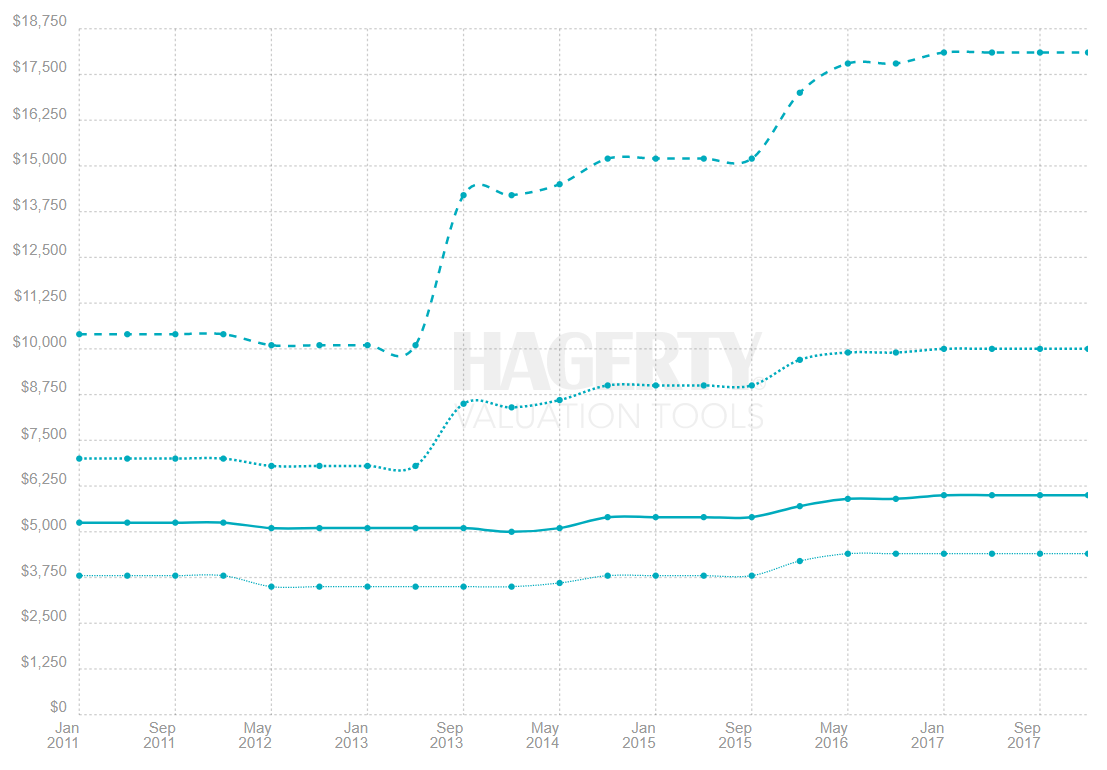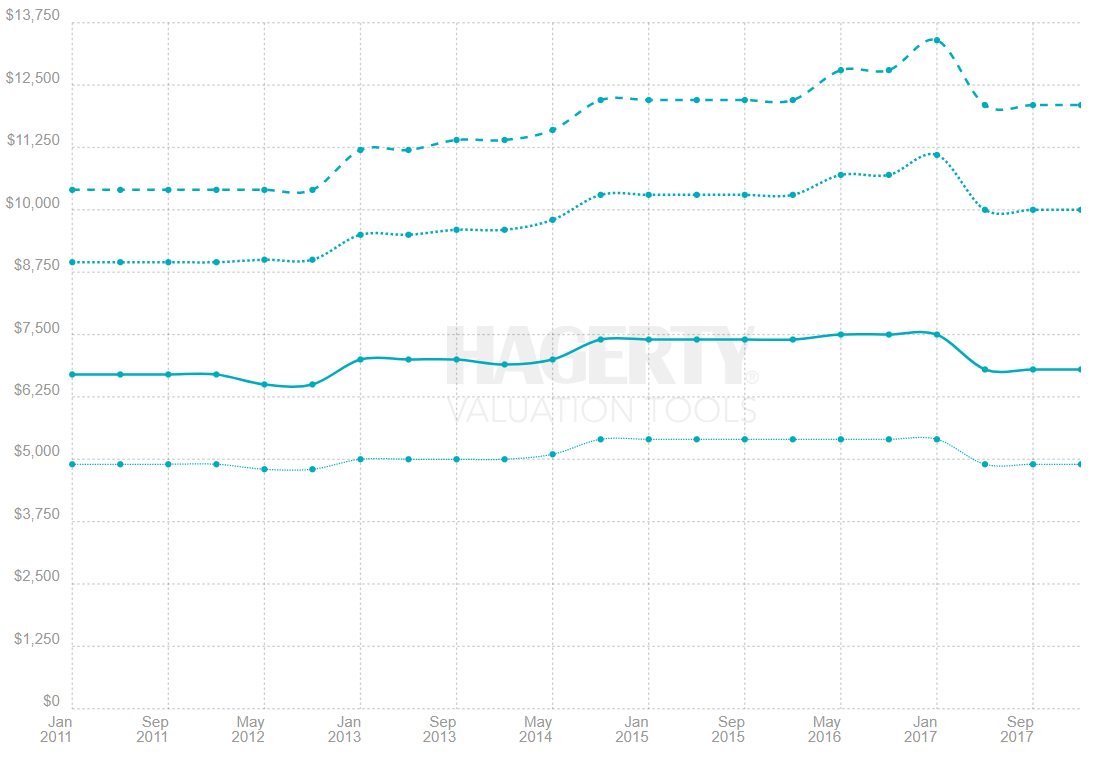
After a popular introduction of the 1983 300ZX in the Japanese market, Nissan moved into the 3rd generation of the Z-car with a U.S. market release in 1984. This new generation featured some significant technical and design advances that continued the Z-car namesake and was loved by automotive enthusiasts all around the United States. While the generational switch certainly came with some hiccups (more on that later), the 300ZX eventually became known as a fantastic enthusiast sports car. In fact, Nissan aggressively targeted the reputation of being the “world’s number-one sports car” with a widespread marketing campaign and some would argue that such a designation was not too far-fetched, especially with the introduction of the Z32.
Quick note for my readers: some of the links on this page may be affiliate links, meaning I receive a commission (at no extra cost to you) if you click on the link and make a purchase. I only recommend products I’ve used and trust unless stated otherwise.
Over the years, the 300ZX has begun to secure its deserved title as a ‘classic vehicle’ and today, many 300ZXs have earned their place inside the garages of collectors and enthusiasts.
Z31 and Z32 — What’s different?
The first question you should be asking yourself if you are interested in purchasing a 300ZX, is whether you are interested in a Z31 or Z32 300ZX. The differences between the two are significant but are mostly design-based. In fact, the one thing that remained the same between the two models would be the 3.0L V6 engine, referred to as the VG-series engine which featured dual overhead cams (DOHC) and was generally quite reliable.

The differences between the two are pretty striking in terms of design. The Z31 profile featured harsh edges, prominent bumpers, and generally had a very 80’s look to it. In contrast, the Z32 featured a more rounded, contemporary design and is generally regarded as the more stylish of the two.
The 1984 Z31 300ZX was technically the last ‘Datsun Z-car’ that Nissan ever released, as in 1985 the Japanese automaker decided to drop the Datsun namesake and refer to all vehicles as Nissan. This renaming effort was aided by an aggressive marketing campaign and saw the beginning of the Nissan Z-car.
The Z32 saw the reintroduction of the 2+2 option to the Z-car line, and in 1993 a convertible model was also available. These options definitely impact the valuation of cars today, but much of it is buyer-dependent and it is difficult to gauge just how much these distinctions affect price in today’s market.
The 300ZX was available in both naturally aspirated and turbo forms. The Z31’s VG30 produced 160 horsepower stock, with the turbo VG30ET producing a solid 200 horsepower. The Z32 featured the VG30DE VG engine which produced 222 horsepower stock. The most impressive and important difference found in the Z32, which helped the 300ZX reach distinction as one of the best value sports cars in the world, was the huge performance boost offered by the twin Garrett turbochargers and dual intercoolers. This ‘Twin Turbo’ option boasted a stunning 300 horsepower from the factory and sold well in the United States despite its high sticker price of $30,000-$35,000.
Towards the end of Z32 production, rapidly increasing strength of the Yen against the U.S. dollar meant that the MSRP began rising markedly. So much so that in 1996, the final year of the 300ZX, prices rose to around $50,000 in the U.S. market, causing would-be customers to doubt the actual value of the 300ZX as a new purchase. One thing was for sure, the Z began losing its distinction as an affordable sports car that it originally attained with the introduction of the 240Z in 1970. Sales began dwindling a few years prior to 1996, leading these models to be scarce today. In its final year of production, Nissan released a line of 300 ‘Commemorative Edition’ 300ZXs which fetch a pretty penny today — in 2017 one Commemorative Edition 300ZX sold for $90,100 at auction. Of course, this one was pretty special, with just 528 miles on the odometer and the official Nissan plaque on the console reading ‘300 of 300’, but this gives you an idea of how much clout these Commemorative Edition 300ZXs hold as a collectible.
Valuations — What’s a 300ZX worth?
Price points differ greatly between the Z31 and the Z32 models of the 300ZX. Below we have compiled some up-to-date price ranges from Hagerty, with notes of important
The Z31 generally falls into the same price range of approximately $3,000 in poor condition to $12,000 in excellent condition. The 1984 model is generally the only year which features a markedly different price and in this case, a 1984 year 300ZX will cost more due to Nissan’s shift away from the Datsun namesake in 1985. With some reputation as the ‘last Datsun Z-car’, the 1984 model-year fetches a bit higher price.

Z31 Price Ranges
- 1984 — $4,400 – $18,000
- 1985 — $3,300 – $12,500
- 1986 — $3,300 – $11,500
- 1987 — $3,200 – $11,300
- 1988 — $3,200 – $10,600
- 1989 — $3,300 – $11,000
The Z32 is slightly pricier than its Z31 counterpart, with higher-quality examples fetching a bit more at the high-end of their price ranges. The most important determinant for price with a Z32 is whether or not it is a Twin Turbo vehicle. While the ‘turbo’ distinction certainly affects the Z31’s price as well, the difference between turbo and non-turbo models was so great for the Z32 that it naturally fetches a lot more. Z32s which are outfitted with the convertible option can also help kick the price up a bit bit it is difficult to measure just how much that affects their valuation in general.

Z32 Price Ranges
- 1990 — $5,300 – $15,500
- 1991 — $5,300 – $15,500
- 1992 — $4,400 – $13,100
- 1993 — $4,400 – $13,100
- 1994 — $4,900 – $12,100
- 1995 — $4,900 – $12,100
- 1996 — $4,900 – $12,100
What to Look For
When inspecting a 300ZX for sale, the most important thing to keep in mind, especially with the Z32’s, is that many of these cars have been driven hard and quite frankly, probably abused. These cars were fast the moment they rolled off the production line and were uniquely positioned as great candidates for modification in attempt to wrench every bit of horsepower the VG was capable of producing. This situation is not a problem by itself, in fact it’s likely what made the 300ZX so popular among auto enthusiasts, but it is the number one thing that should be on your mind when inspecting one for sale.
The Z31 can be inspected much like you would inspect a 240Z or 280Z (check out our buyer’s guide on that to see what I’m talking about). You’re going to want to look for rust above all else. Check all the problem areas such as under the battery tray, on the doglegs, in the wheel wells, around the spare tire area, and generally anywhere else you can see with your flashlight! With any Z, or really any classic automobile for that matter, you simply cannot be meticulous enough when it comes to inspecting the vehicle for rust. Past that, the 300ZX requires a thorough mechanical look-over, and perhaps the advice of a mechanic or trusted friend knowledgeable of classic cars. With the sellers permission, make sure you take it for a drive and pay attention for any signs of misfiring or general engine knocking, and be sure to check for leaks after the car has been running for a while.
One thing you simply can’t always tell with just a visual check is whether or not rust-repair has been done on the body. A car that has had rust repair done is not necessarily a poor purchase, but if the seller is not upfront about this and you end up discovering rust repair, it should be a major red flag. Similarly, a little bit of rust repair in the regular areas is typically fine, but an extremely high volume of rust repair present on the vehicle should also serve as a warning to you.

The question becomes, how can you actually check for hidden rust repair? While some swear by using a magnet to detect any body filler along the exterior, we at ZCarGuide we recommend using a coating thickness gauge to be sure. Using a gauge, you can simply go over any spot you find suspicious and see if the coating thickness matches up to the rest of the car. It should quickly become apparent whether rust repair has been done on the car. In the past, such a tool was a little too expensive to be considered a necessity, but we find them so useful and can now be found so cheaply on Amazon that we strongly recommend you purchase one before ever looking at a prospective Z-car for sale. The Z-car is simply too rust-prone to not check all the boxes on this issue.
The Z32 is difficult to find in a highly un-modified condition. Many Z32s you will go to look at will have some collection of cosmetic changes such as prominent body kits, aftermarket lights galore, and 2000’s shiny chrome wheels. Lots of Z32s will more resemble an artistic form of the owner’s self-expression rather than a vintage car, but that’s fine — most of these changes can be easily reverted and could serve as a powerful negotiating tool for you. With any modification, you’re going to want to ask if the seller has the original parts if the change involved actually swapping out an original piece.
While impressively powerful little sports cars, the Z32 did not thrive under any form of owner-neglect. Z32s tend to really come apart mechanically with any form of routine maintenance being overlooked — if the timing belt isn’t changed regularly (every 50,000 miles or time equivalent) the engine probably features some pretty destroyed pistons, valves, or other internal machinery and will require a complete engine rebuild. These cars needed routine and proper maintenance and you will find that this is one of the most difficult things to find when searching for a used 300ZX. A perfect, well maintained example is a tall-order unless you’re looking to spend a lot — and even then you may find yourself searching the classifieds on-end for months. The sweet spot is a vehicle that has been regularly enjoyed and the owner has kept up pretty well with maintenance (big plus if service records are available) but even then you will likely need to replace a lot of componentry as soon as it becomes yours.
Buying Online
The best way to find a 300ZX today is through online listing services. Even if you are not located in a traditionally dry-climate area, it may be worth buying a 300ZX online that is from such a climate and having it shipped to you. However, you should only buy a 300ZX in this scenario (sight-unseen) in extreme cases and after a lot of detailed communication the seller. In that scenario, you should have detailed pictures taken of every possible rust area and service records that indicate regular maintenance. In any event, you are always better off taking a look at the car in person or having someone look for you. In fact, I would recommend never purchasing a 300ZX unless you or someone you trust has actually driven the car. That is, if it is even advertised as operational.
Here are a few good places to look for 300ZX for sale:
- Our classifieds section – At ZCarGuide.com we curate Z-Cars we find online and update this section regularly. We also allow users of our site to list directly to our classifieds section. If you are in the market for a 300ZX, you may want to sign-up to our email-list on the right of this page (bottom of the page on mobile), as we send out regular emails about the very best deals we find.
- eBay – eBay is a great resource for this. Solid Z-cars from all over the country are listed for sale on eBay every day. Keep in mind though, this method of finding Z-Cars comes with a lot of competition, so be quick if you are interested!
- Craigslist – Despite the fact that Craigslist is very dated and sometimes annoying to use, it is still one of the best resources for finding Z-Cars. To quickly search multiple regions, check out SearchTempest, it will automatically search every Craigslist region within ‘x’ miles from a given zip-code.
- Autotrader Classics – Autotrader always has lots of 300ZXs for sale, but most are restored and being sold by a dealer, so expect to find mostly expensive Zs here.
- Hemmings – Both in print and online, Hemmings is a great place to find high-quality 300ZXs.
